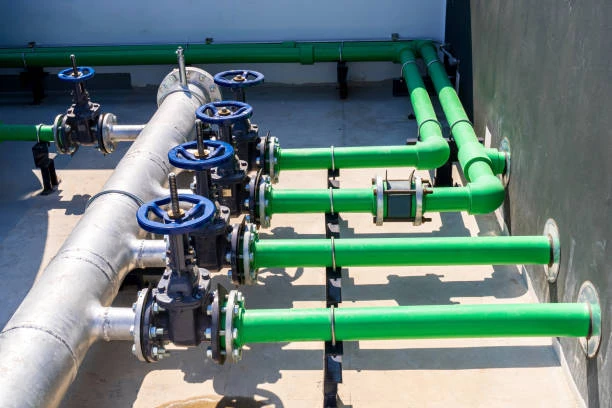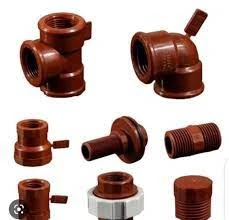GE Vernova is expanding its operations in the UK, focusing on high-voltage direct current (HVDC) technology, particularly in the production of HVDC valve and transformers. This strategic move is significant in supporting the transition to cleaner energy sources, enhancing grid reliability, and meeting the growing demand for efficient power transmission. This article explores the role of gate valves in HVDC applications, the advancements made by GE Vernova, and the implications for the UK energy sector.
Understanding HVDC valve Technology
What Is HVDC?
High-voltage direct current (HVDC) technology is a method of transmitting electricity over long distances using direct current rather than alternating current (AC). HVDC systems are especially beneficial for interconnecting different power grids, integrating renewable energy sources, and improving the efficiency of electricity transmission.
Importance of HVDC Valves
HVDC valves are critical components in HVDC systems. They function as switches that control the flow of electricity, converting AC to DC and vice versa. These valves ensure efficient power conversion and help maintain the stability of the grid.
Benefits of HVDC Systems
- Reduced Transmission Losses: HVDC systems experience lower energy losses compared to AC systems, making them more efficient for long-distance power transmission.
- Interconnection of Grids: HVDC technology enables the interconnection of different power grids, allowing for better resource allocation and grid stability.
- Integration of Renewables: HVDC is ideal for integrating renewable energy sources, providing the flexibility needed to accommodate variable energy outputs.

The Role of Gate Valve in HVDC Systems
What Are Gate Valves?
Gate valves are a type of valve used to control the flow of fluids in a pipeline. In HVDC applications, gate valves play a vital role in managing the flow of coolant fluids used in cooling systems for HVDC converters.
Functions of Gate Valve in HVDC
- Flow Control: Gate valves allow for precise control of coolant flow, ensuring that HVDC systems operate within optimal temperature ranges.
- Safety: They provide essential safety measures, allowing for the isolation of sections of the cooling system for maintenance or in emergencies.
- Durability: Designed to withstand high pressures, gate valves are well-suited for the rigorous demands of HVDC operations.
GE Vernova’s Expansion
Growing Operations in the UK
GE Vernova is expanding its HVDC valve and transformer operations in the UK, a move that reflects the increasing demand for efficient energy transmission technologies. This expansion includes investment in new facilities and technologies to enhance production capabilities.
Advancements in HVDC Valve Technology
GE Vernova is at the forefront of developing advanced HVDC valves that offer improved performance and reliability. These innovations include:
- Enhanced Cooling Systems: Improved designs that optimize coolant flow and temperature management.
- Smart Technology Integration: Incorporating IoT technology for real-time monitoring and predictive maintenance.
Benefits for the UK Energy Sector
The expansion of GE Vernova’s operations has several implications for the UK energy sector:
- Supporting Renewable Integration: HVDC technology facilitates the integration of renewable energy sources, such as wind and solar, into the grid.
- Improving Grid Reliability: Advanced HVDC systems enhance the stability and reliability of the electricity supply.
- Economic Growth: The expansion will create jobs and stimulate economic activity in the UK.
The Future of HVDC valve Technology
Trends in the Industry
The HVDC market is poised for significant growth due to several key trends:
- Increasing Renewable Energy Adoption: As countries strive to meet carbon reduction targets, the demand for HVDC technology will continue to rise.
- Investments in Grid Infrastructure: Upgrading existing grid infrastructure to accommodate HVDC systems will be crucial for future energy needs.
- Technological Innovations: Ongoing research and development will lead to more efficient and reliable HVDC solutions.
Role of Gate Valves in Future Developments
As the demand for HVDC technology grows, the role of gate valves will remain critical. Innovations in valve technology will enhance performance and reliability, further supporting the efficiency of HVDC systems.
Conclusion
GE Vernova’s expansion of HVDC valve and transformer operations in the UK marks a significant advancement in the energy sector. By focusing on innovative technologies and efficient power transmission solutions, GE Vernova is positioning itself as a leader in the transition to a more sustainable energy future. The integration of gate valves in HVDC systems will continue to play a vital role in ensuring the reliability and efficiency of these technologies.
FAQs
1. What is HVDC technology?
HVDC technology transmits electricity over long distances using direct current, offering efficient power transmission and integration of renewable energy sources.
2. What role do gate valves play in HVDC systems?
Gate valves control the flow of coolant in HVDC systems, ensuring optimal temperature management and providing safety measures for maintenance.
3. Why is GE Vernova expanding its operations in the UK?
The expansion aims to meet the growing demand for HVDC technology, support renewable energy integration, and enhance grid reliability.
4. What are the benefits of using HVDC technology?
HVDC technology improves grid stability, facilitates renewable energy integration, and enhances the efficiency of electricity transmission over long distances.
5. How does smart technology impact HVDC valve operations?
Smart technology allows for real-time monitoring and predictive maintenance, improving the reliability and performance of HVDC valves.


















